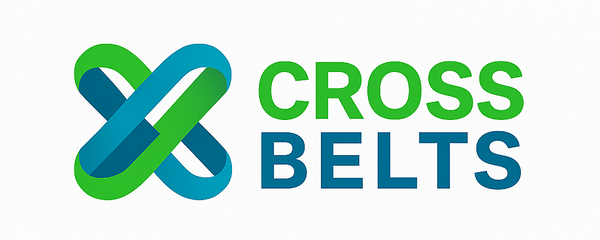The End of Section 321: Why Cheap Belts Just Got Expensive
What It Means for E-Commerce — and How CrossBelts.com Helps You Win
For years, low-value imports (≤ $800) slid into the U.S. with no duties. That was the Section 321 “de minimis” shortcut. As of August 29, 2025, duty free de minimis is officially suspended for all countries. That means more paperwork, longer clearance times, and duties assessed on packages that used to breeze through.
The Pain: Why This Hits Hard
- Shoppers: Expect higher all in prices and slower deliveries on overseas orders.
- Brands & Marketplaces: Margins crushed as duties, brokerage, and compliance stack up.
- Small Businesses: Unpredictable landed costs and customs delays put uptime at risk.
| Scenario | Before (De Minimis) | Now (Post-321) |
|---|---|---|
| Low-value import (≤ $800) | Often duty free, fast pass | Duties assessed, formal entry, slower clearance |
| Overseas direct to consumer | Lean cost structure, simple logistics | Higher landed costs + compliance overhead |
| Customer experience | Predictable, cheap | Fees, delays, uncertainty |
The Impact on V-Belt Sellers
- Cheap imports crushed: Sellers leaning on low cost offshore belts lose their price edge once duties and brokerage hit.
- Lead times stretch: Customs friction slows delivery; backorders and cancellations rise.
- Landed cost shock: Duty + tariffs + carrier fees can outprice “budget” belts versus U.S.-stocked alternatives.
- Customers defect: Buyers migrate to domestic sources that ship fast and invoice cleanly.
Bottom line: The game isn’t “who’s cheapest overseas” anymore — it’s “who can deliver reliably inside the U.S.”
Competitor Takedown: Who Loses Now (and Why)
#1 The Overseas Dropship-Only Seller
They built on de minimis. Without it, their “cheap & cheerful” model becomes “slow & expensive.” Duties and paperwork shatter margins and timelines.
#2 The Outdated Catalog Site
Static PDFs, poor search, no cross refs. In a compliance heavy environment, buyers need precise part matches and fast U.S. fulfillment — not guesswork.
#3 The “Mystery Brand” Belt Peddler
No specs, no lineage, no support. When duties bite, buyers won’t risk downtime on questionable belts with zero transparency.
#4 The Marketplace Middleman
Extra fees + variable shipping + returns drama. In the post 321 world, buyers favor direct, U.S. based sources with clear fitment data.
Why CrossBelts.com Wins (and Helps You Win)
- Tariff proof playbook: We route shoppers to U.S. inventory and trusted suppliers to avoid overseas duty surprises.
- Instant cross reference: Search by OEM, section (A/B/3V/5V/8V, XPZ/XPA, etc.), or dimensions to get the right belt the first time.
- Aftermarket & OEM options: Compare quality, specs, and availability — not just price — to keep uptime high.
- Speed and clarity: U.S. shipping, clean invoicing, and fewer customs headaches mean fewer cancellations and callbacks.
Proof: The Cost of Not Adapting
Pre-change, a $20 import belt might land duty free. Now? Add duties, brokerage, and delays — and that “cheap” belt isn’t cheap anymore. CrossBelts steers buyers to U.S. stocked belts with clear specs and fast shipping. That’s not just convenience — it’s risk insurance.
Your Move: Turn Tariffs Into an Advantage
- Use CrossBelts search to identify the exact belt (OEM → industry standard → ready to order).
- Pick U.S. available options (aftermarket or OEM) to avoid customs friction.
- Ship fast to keep equipment uptime high and costs predictable.
Note: Availability, pricing, and duties can change. Always confirm specs and shipping options before purchase.
Search for your Cross Reference

V‑Belt Finder Tool
Already have a part number? Search for your match instantly.
